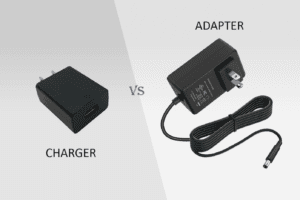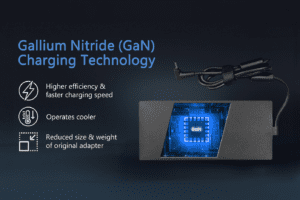BLOG
UL 4900 Light-EV Charger Manufacturer: How to Build Swappable-Battery Chargers for E-Scooter Fleets
Table of contents
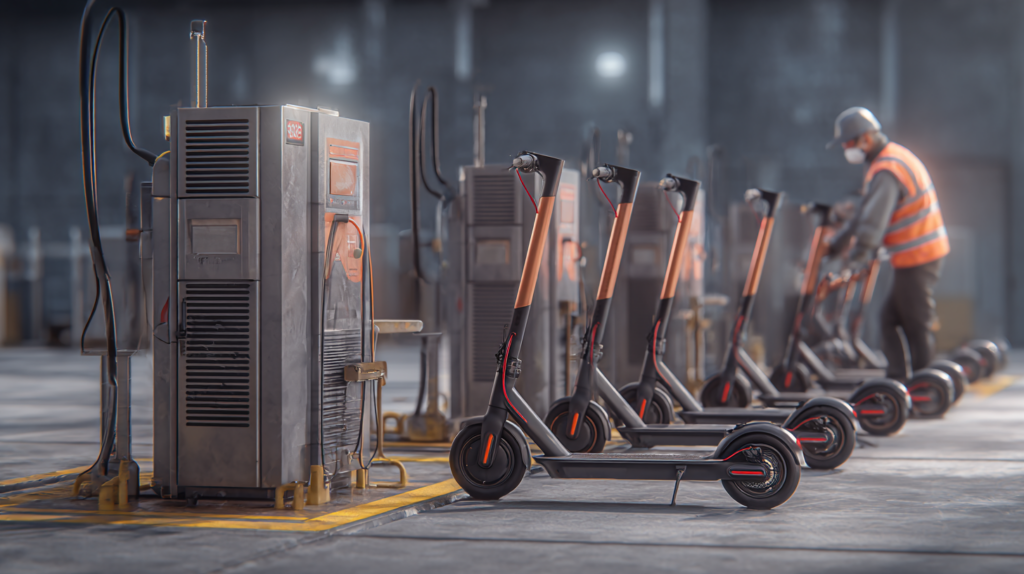
Why UL 4900 Certification Is Critical for Light Electric Vehicle Charger Design
The rise of e-scooter and light electric vehicle (LEV) fleets has created a surge in demand for efficient, safe, and scalable battery charging infrastructure. At the center of this transformation is UL 4900, the new safety standard developed specifically for LEV battery systems—including swappable battery chargers. For OEMs, adhering to UL 4900 isn’t just about regulatory compliance; it’s a strategic requirement for entering global shared micromobility markets.
Unlike traditional battery charger certifications (UL 1012 or UL 1310), UL 4900 focuses on the unique risks of swappable and mobile LEV energy storage systems. It covers charging conditions, battery communications, fault tolerance, thermal management, and user safety in public or outdoor environments. For e-scooter fleets, these factors are especially critical due to outdoor exposure, frequent user handling, and high cycling rates.
Top Features
- Applies to both fixed and portable LEV chargers
- Integrates requirements for smart battery communication
- Covers thermal, mechanical, and electrical safety risks in shared environments
Top Benefits
- Enables fleet operators to deploy compliant charging hubs quickly
- Reduces liability exposure for OEMs and operators
- Supports faster global certification and city-based pilot approvals
Best Practices
- Design chargers for UL 4900 compliance from the outset, not as a retrofit
- Work with certified labs early for pre-compliance testing
- Prioritize modularity to future-proof for battery or connector changes
Meeting UL 4900 standards is essential for earning trust and gaining traction in the competitive, fast-growing micromobility infrastructure sector.
How to Engineer Swappable-Battery Chargers for E-Scooter and LEV Fleets
Swappable battery systems are becoming the standard for e-scooter fleets due to their operational efficiency. Instead of waiting for in-scooter charging, operators simply swap depleted batteries at charging stations and keep the fleet moving. For OEMs, this shift demands a new class of rugged, efficient, and modular battery chargers.
Key design elements include:
- Standardized battery interfaces (mechanical and electrical)
- Battery ID and state-of-health communication
- Safe dock-in/undock mechanisms with zero insertion spark
Chargers must be able to automatically detect battery type, voltage range, and charging profile, and terminate charging based on real-time feedback. This requires digital communication protocols such as CAN, SMBus, or proprietary BMS signals. Ruggedization is equally important—chargers must survive outdoor deployment, physical abuse, and high charging cycles per day.
Top Features
- Multi-port dock-style chargers with battery recognition
- IP-rated enclosures for outdoor, semi-public use
- Fanless or low-noise thermal management designs
Top Benefits
- Enables fast fleet turnaround with minimal manual intervention
- Reduces downtime by supporting real-time battery diagnostics
- Simplifies deployment at storefronts, transit hubs, or fleet garages
Best Practices
- Include handshake verification before charging begins
- Design modular bays for flexible charging capacity (e.g., 4/8/12 batteries)
- Optimize for stackable footprints to conserve station space
Swappable battery charger design is as much about smart UX and safe power delivery as it is about speed and convenience for operators.
Key Power Requirements for Light-EV Swappable Battery Charging Systems
The diversity of LEV battery chemistries and voltages means that OEMs must carefully design power systems that are versatile, efficient, and protective. Most e-scooter batteries fall between 36 V and 60 V, with typical charging power ranging from 250 W to 1.5 kW per battery. A multi-slot charger could demand over 10 kW total.
It’s essential to use programmable charging profiles, supporting constant current/constant voltage (CC/CV) logic, current limits, and thermal derating. A well-designed system should adapt automatically to battery age, ambient temperature, and communication feedback.
High-efficiency AC-DC power stages are vital for reducing heat and lowering utility costs for operators. Additionally, internal isolation barriers protect users and devices during charge/disconnect events, especially in public access environments.
Top Features
- Wide-range AC input (90–264 V) for global deployment
- High-efficiency DC output (92%+) with active PFC
- Programmable charge profiles for lithium-ion chemistries
Top Benefits
- Supports global fleet expansion without redesign
- Reduces energy costs over thousands of cycles per battery
- Minimizes battery degradation by tailoring charge curves
Best Practices
- Use power modules with UL/CE/IEC compliance for safety and EMI
- Enable dynamic current limiting per slot to balance thermal loads
- Design with derating curves for both temperature and voltage extremes
Optimizing for power density, thermal performance, and safety gives your charging system the best chance at scaling in micromobility networks.
CLIENT'S QUOTE
"Phihong’s PoE solutions have made a huge difference for us! Our network runs more efficiently, and we’ve seen real cost savings. We couldn’t be happier!"
What to Know About Thermal Design and Outdoor Deployment
Deploying swappable-battery chargers outdoors presents a unique set of thermal challenges. Chargers may operate in temperature extremes, face direct sunlight, and must manage the heat generated from charging multiple LEV batteries simultaneously. If not properly designed, thermal issues can reduce charging efficiency, shorten component lifespan, and even pose safety hazards.
OEMs must consider both internal heat management and external environmental factors. Fanless or semi-passive cooling systems are preferred for outdoor use due to lower maintenance and less susceptibility to dust and water intrusion. Aluminum enclosures with high thermal conductivity, weather seals, and drip-proof venting are essential.
Some systems may also incorporate smart thermal throttling, which adjusts charging rates based on real-time ambient and component temperature. For installations in hotter climates, including solar radiation shielding and thermally reflective finishes can improve safety and reliability.
Top Features
- IP54+ rated weatherproof enclosures
- Fanless cooling or redundant fan design with RPM sensing
- Smart thermal throttling with embedded sensors
Top Benefits
- Ensures reliable operation in hot, dusty, or wet environments
- Minimizes overheating risk in public or unsupervised locations
- Reduces maintenance needs and field failure rates
Best Practices
- Perform thermal simulations for max-load and worst-case solar scenarios
- Mount enclosures away from direct sun or near shaded structures
- Include temperature sensors for both ambient and internal hot spots
Effective thermal design is the backbone of safe, resilient LEV charger deployment—especially in large fleet ecosystems with 24/7 operations.
Smart Charging Features and Connectivity for LEV Fleet Integration
Beyond basic voltage and current control, next-gen swappable battery chargers for LEVs must offer smart, connected features to support fleet operations. This includes real-time monitoring, remote diagnostics, and integration with fleet management platforms.
Essential smart features:
- Battery authentication to prevent charging unauthorized or damaged packs
- Wi-Fi/LTE connectivity for remote status reporting
- Cloud-based dashboards for usage tracking, energy consumption, and fault alerts
Many fleet operators now demand OCPP (Open Charge Point Protocol) compatibility for back-end integration. Charger APIs also allow operators to trigger specific slots for maintenance, monitor state-of-health (SOH), or dynamically prioritize certain batteries for charging.
Top Features
- Secure authentication with NFC or QR-code battery ID
- Cellular, Ethernet, or LPWAN communication support
- Cloud-ready firmware with API/webhooks
Top Benefits
- Enables predictive maintenance and fault prevention
- Integrates with rental apps and user tracking systems
- Improves operational visibility for fleet managers
Best Practices
- Secure communications with encrypted handshake and API tokens
- Integrate with BMS to log charge cycles and SOH per battery
- Push OTA firmware updates to charging units remotely
Smart features are no longer a luxury—they’re a core component of scalable LEV fleet infrastructure and are key to long-term operational ROI.
How Phihong USA Helps OEMs Build UL 4900-Compliant LEV Charging Systems
Phihong USA is an experienced manufacturer of high-reliability power products for electric mobility, industrial equipment, and telecom-grade power. We support OEMs and micromobility startups in designing UL 4900-compliant swappable-battery charging systems for global e-scooter and LEV fleets.
Phihong solutions include:
- AC-DC power modules from 250 W to 3 kW with PFC and low ripple
- Modular, stackable charging shelves and multi-slot charging stations
- Rugged IP-rated enclosures designed for semi-public installation
- Battery communication support (CAN, SMBus, UART)
- Pre-compliance testing for UL 4900, CE, and EMC
- Custom thermal, mechanical, and firmware integration
Whether you’re launching a scooter-share fleet or scaling battery swap stations across cities, Phihong delivers proven solutions that keep your vehicles charged and streets moving.
For engineering support or to request a custom design consultation, visit www.phihong.com or email usasales@phihongusa.com.

Contact Our Team Today!
Our dedicated sales team and international partners are prepared to support you with your latest projects and initiatives globally.
 Explore More with Phihong USA
Explore More with Phihong USA
As we conclude our exploration of PoE technology, it’s evident how these innovations are streamlining power and data integration across various industries. Phihong USA stands at the forefront of this technological advancement, offering a diverse range of power solutions designed to meet the evolving needs of modern industries.
Phihong USA’s extensive product lineup includes:
- Power over Ethernet (PoE) Solutions: Delivering reliable power and data transmission over a single cable, ideal for simplifying network installations and reducing costs.
- AC/DC Adapters and Power Supplies: From compact adapters to industrial-grade power supplies, Phihong provides solutions that ensure efficiency and reliability in various applications.
- Battery Chargers: Customizable chargers for lithium-ion and lead-acid batteries, supporting a wide range of power requirements for mobility and industrial applications.
- Medical Power Supplies: Specialized power solutions designed to meet the stringent requirements of the healthcare industry, ensuring safety and reliability.
Phihong USA is committed to innovation and excellence, continually developing products that meet the highest standards of performance and reliability. Their global reach and dedication to customer support make them a trusted partner in powering the future.
Here are some useful links to explore Phihong USA’s offerings further and bring in new potential clients:
Visit Phihong USA to discover how their advanced power solutions can support your business needs. Whether you’re looking to upgrade your network, or find reliable power supplies, Phihong USA has you covered.
By choosing Phihong USA, you’re partnering with a leader in power technology, ensuring your operations run smoothly and efficiently with top-tier power solutions. Contact Us today!
FAQ
What is UL 4900 and why is it important for LEV charger manufacturers?
UL 4900 is a specialized safety standard developed to address the unique risks and operational requirements of light electric vehicle (LEV) batteries and charging systems, including swappable battery stations. Unlike older standards that focus on general-purpose chargers, UL 4900 emphasizes real-world use cases: outdoor environments, high cycling, battery interchangeability, and public handling.
It covers:
- Electrical safety (short circuit, overcharge, thermal runaway)
- Mechanical robustness (connectors, housing, ingress protection)
- Interoperability with battery BMS systems
Manufacturers targeting shared e-scooter or LEV applications need UL 4900 compliance to meet regulatory approvals and reduce liability. Many cities and public transportation authorities now require UL 4900-compliant chargers in permit and pilot programs.
How many watts are typically needed to charge swappable e-scooter batteries?
Most e-scooter batteries range between 250 W and 1.5 kW charging power, depending on the battery capacity (typically 0.5–1.2 kWh), chemistry, and desired charge time. For fleet operators aiming for fast turnaround, higher wattage (e.g., 500–700 W per slot) is preferable.
OEMs building multi-slot chargers should consider:
- Total system wattage (e.g., 4 slots × 500 W = 2 kW total)
- Simultaneous charging vs. staggered charging logic
- Input AC limitations (e.g., single vs. three-phase supply)
Dynamic current sharing and per-slot control allow better thermal and energy load management across high-use urban deployments.
Can swappable battery chargers be used outdoors?
Yes, but only if designed specifically for outdoor or semi-public deployment. Outdoor-compatible LEV chargers must be:
- IP-rated (IP54 minimum, IP65+ ideal)
- Fanless or equipped with weather-sealed ventilation
- Resistant to UV, rain, dirt, and vandalism
Phihong provides outdoor-ready charging enclosures with ruggedized metal chassis, tamper-resistant fasteners, and conformal-coated PCBs for extended durability. Safety is especially critical since users may handle batteries with wet hands or in bad weather.
What smart features should LEV chargers support for fleet use?
Smart chargers should go beyond voltage regulation. Top features for fleet integration include:
- Battery authentication (to prevent charging unapproved units)
- Real-time monitoring via cloud platforms
- API access for rental app or fleet dashboard integration
- Status indicators and user feedback (LEDs, touch displays, mobile alerts)
Connectivity protocols such as Wi-Fi, LTE, Ethernet, and even LoRaWAN can be used depending on deployment needs. Firmware must support OTA updates, secure handshake protocols, and battery-level logging for effective remote fleet management.
How does Phihong support swappable battery charger OEMs?
Phihong USA offers complete engineering and manufacturing support for OEMs building UL 4900-certified swappable battery chargers, including:
- Modular DC charging platforms
- Battery-safe AC-DC power modules (up to 3 kW)
- Embedded firmware support for BMS communication
- Outdoor-rated chassis design and thermal simulation
- Compliance guidance and rapid prototyping
We collaborate with you from early concept to mass production and help you meet regional safety certifications, environmental specs, and fleet scaling targets.
To start a design consultation, email sales@phihongusa.com.

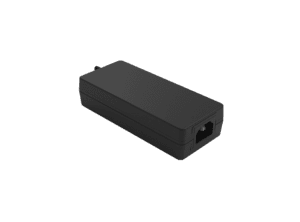
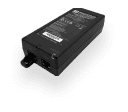
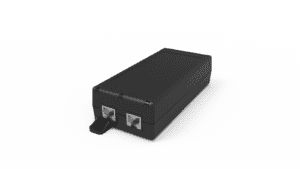

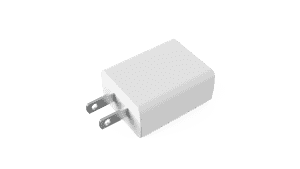
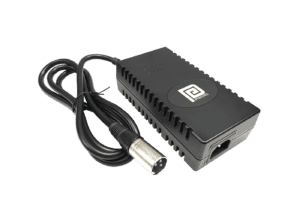

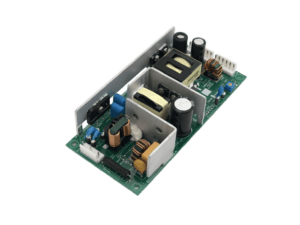
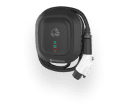
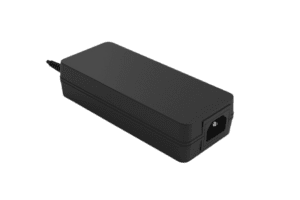



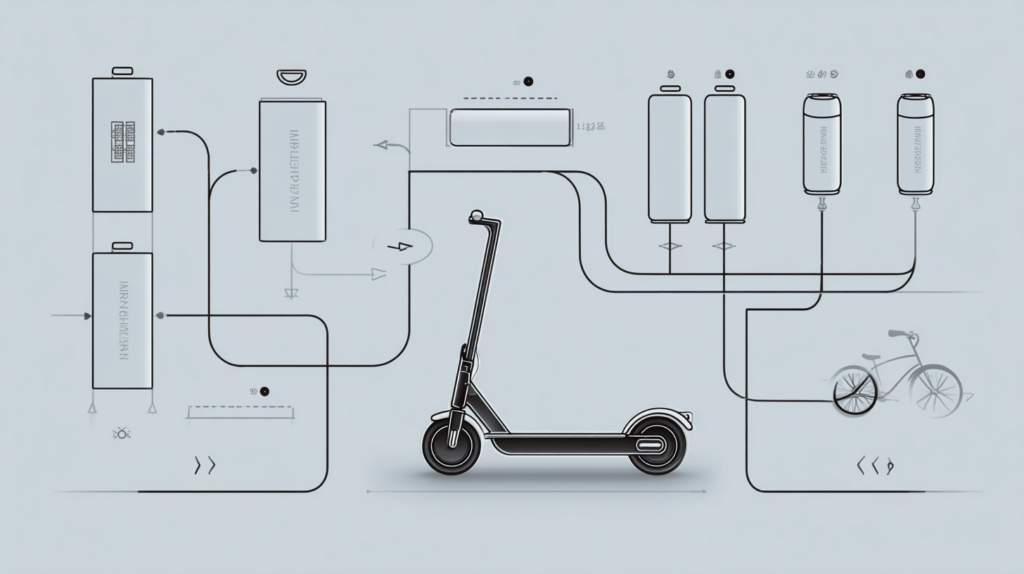 Explore More with Phihong USA
Explore More with Phihong USA